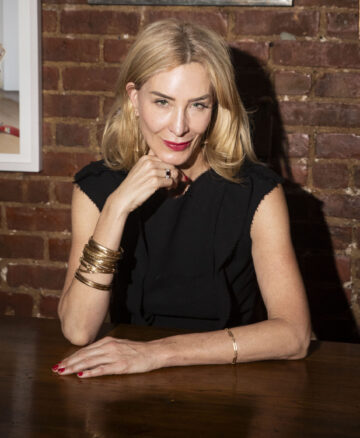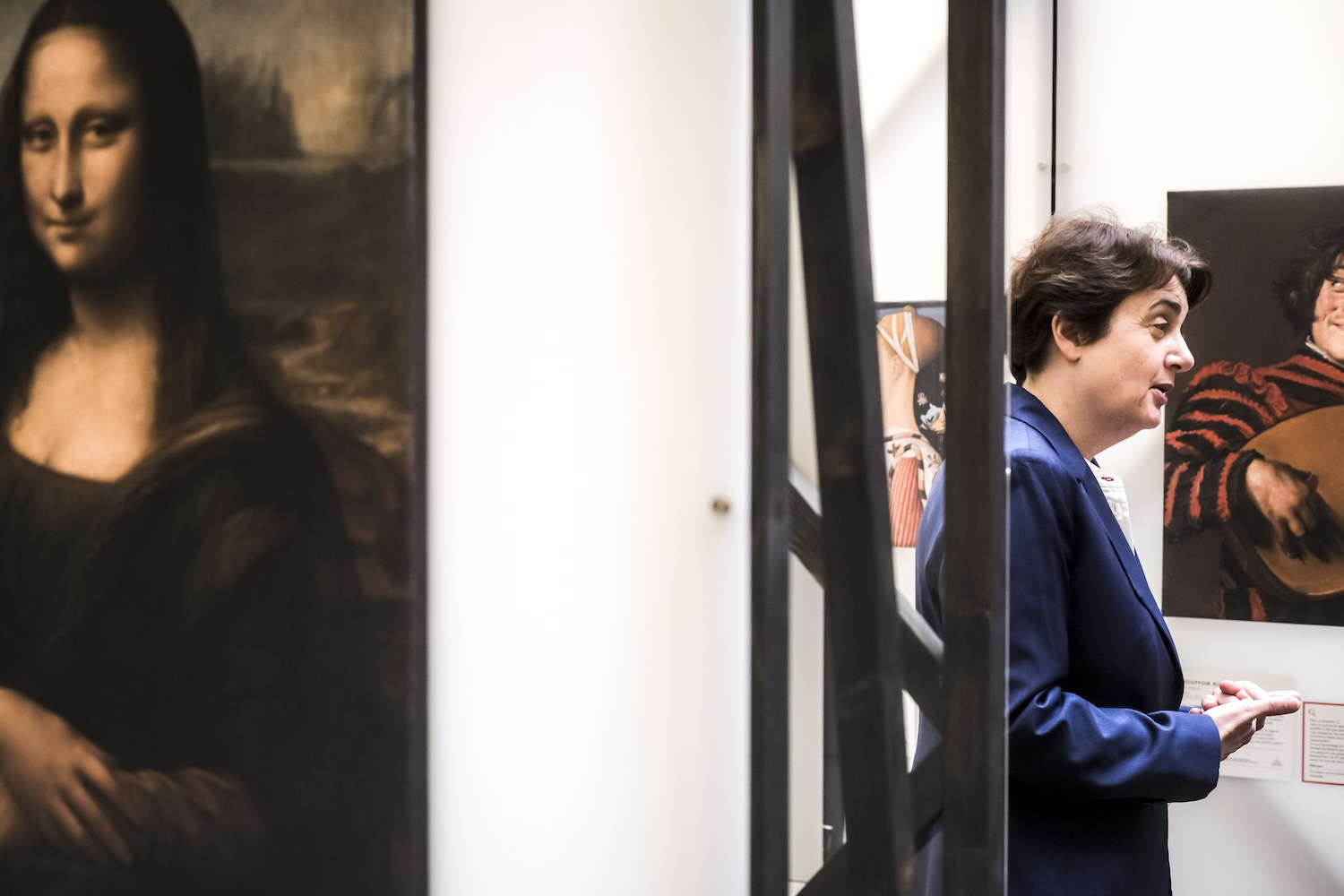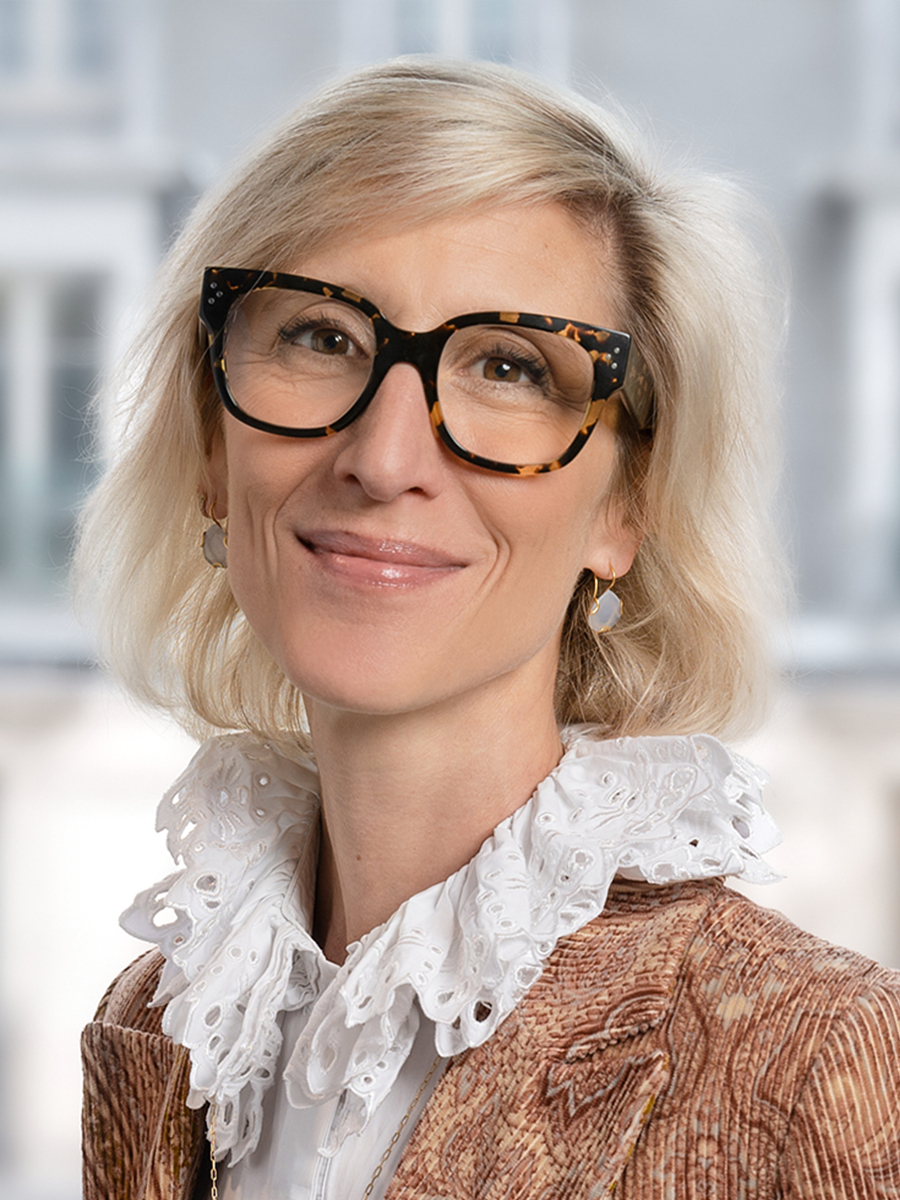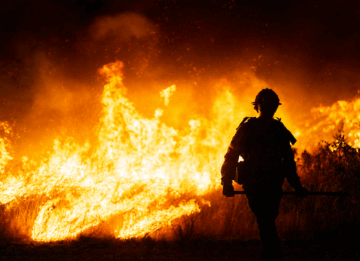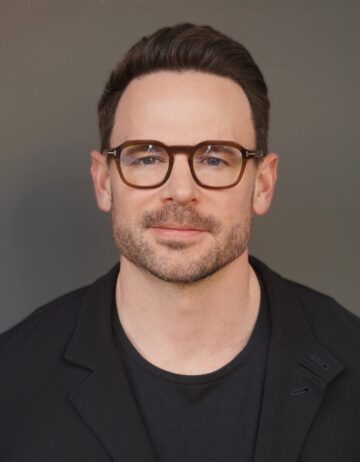The Louvre’s President-Director Laurence des Cars is leading the historic institution into the future. By Brunswick’s Aurélia de Lapeyrouse
On a speaking tour about the museum, President-Director Laurence des Cars stands near a reproduction of the Louvre’s most famous painting, Leonardo da Vinci’s “Mona Lisa.”
The wonders of the Palais de Louvre’s interiors were never intended for the public, but for only a few elite—the King, nobles, privileged visitors and servants. But in 1793, at the height of the French Revolution, the National Assembly opened the doors of the palace, establishing it as a public museum. It has stood since as a symbol not just of France and the nation’s egalitarianism, but of shared humanity.
Today, the Louvre is the largest and most visited museum of its kind in the world, exceeding 10 million visitors a year prior to the pandemic. It’s 13.5 kilometers of exhibition space hold over 35,000 pieces of art and historic objects representing every culture on the planet. Often referred to as “the museum of museums,” it has for centuries served as an important model for many other institutions around the world.
As the first woman to lead the Louvre since its founding, President-Director Laurence des Cars has brought both vision and dynamism to the iconic cultural institution. With a career spanning the Musée d’Orsay, the Musée de l’Orangerie and the Louvre Abu Dhabi, the French art historian has long advocated for museums not only as guardians of the past, but as spaces that speak to the present.
As she oversees the Louvre’s transformative “New Renaissance” project, des Cars met with the Review to reflect on what it means to lead in the 21st century, the evolving role of museums and managing the Louvre not only as a historic institution, but as a global brand.
What is the role of a museum today, and more specifically, what are the missions, values and ambitions of the Louvre?
There’s always, to me, something profoundly contemporary here. The Louvre is a place that gives depth to the present. It’s ancient, but also deeply relevant to our time.
The Louvre’s educational mission, in the broadest sense, has always been central—whether for citizens or artists. From the start, it has embodied this dual identity: on one side, painting and fine arts, and on the other, civilizational testimony, archaeology. I find this double nature of the Louvre, together with its history, fascinating.
That’s the true beauty of a museum: this sudden compression of time and space, the moment when you find yourself face to face with artworks, with fragments of history, which you experience through your own sensitivity.
I deeply believe in appealing to the emotional intelligence of visitors. But some people feel that places like the Louvre aren’t meant for them, because the story being told isn’t their story. It’s up to us to remind them that what they are seeing is heritage that transcends national boundaries—it is a shared heritage of humanity.
The Louvre’s mission is to welcome the world, to reestablish the museum as a space of cohesion for our fellow citizens. A shared space that houses many different ideas but also communicates a unifying principle: the equality of artworks and of civilizations. In today’s fractured and violent world, where many visitors are feeling lost and full of questions, this is the kind of place we truly need.
Once this philosophy is established, then the practical work begins within our teams and supervisory authorities.
The number of visitors to Leonardo da Vinci’s “Mona Lisa” especially has been a concern. How are you handling that?
Without doubt, the most famous artwork in the world, our “superstar” sometimes overwhelms even us. It’s an object of extraordinary fascination, whose exceptional status the Louvre tried to downplay for a long time, treating it like any other painting, like any other da Vinci. But we can clearly see now that approach has run its course.
The crowds are quite extraordinary. They no longer allow for true enjoyment, for the pleasure of discovering a major masterpiece of painting. People don’t look around them, even though some of the world’s most beautiful Italian paintings are nearby—notably Veronese’s “Wedding at Cana,” among many others. And that’s a bit disheartening. What’s more, they put extra pressure on our teams. There’s a general feeling of frustration, of strain.
It was notably on the basis of this observation, which I quickly shared with the French authorities, that President Macron initiated the “New Renaissance” project. Our goal is to give the Louvre a second grand entrance. We’re freeing up space beneath the Cour Carrée, around the medieval Louvre. This newly available area allows us, in particular, to envision a beautiful new space for the “Mona Lisa”—one that will finally enable us to properly tell her story, her modern journey, while providing all the functions expected today of a major international museum.
Part of what makes this place uniquely beautiful is the depth of its history and this project reflects that. More than 800 years. We’re still on the same site today, in a space that has been continuously transformed—a permanent metamorphosis. There is no other museum in the world like this, with this layered richness.
We are now beginning a new chapter: The creation of an entrance on the east side, facing the 17th century Colonnade, will allow for a better balance with the pyramid and for improved circulation of visitors across the entire building and all departments.
The goal is to breathe new life into this museum, to give it the vitality it needs for the 21st century. That means preparing it for new generations with new tools and new expectations.
I really hope to reinforce a sense of joy in the Louvre experience—there’s no reason why a museum visit shouldn’t be joyful.
“The goal is to breathe new life into this museum, to give it the vitality it needs for the 21st century.”
If the “Mona Lisa” had not been at the Louvre, would she have become the same kind of superstar?
The “Mona Lisa” was already a famous painting when it arrived in France. By the 19th century, it was one of the most well-known among Leonardo’s works. But what really changed everything was the theft, just before World War I.
She disappeared for more than two years, which is a very long time. During that period, her image was reproduced absolutely everywhere, because everyone was searching for her. It was the golden age of illustrated newspapers, and her image became truly global. That’s when the modern myth began.
A young Franz Kafka came to Paris just to see the empty wall. They had left the nail in place to signify the absence. The story of “the nail” became symbolic. At that moment, she had entered a space beyond the ordinary—and it hasn’t stopped since.
When we began thinking about a new space for the “Mona Lisa,” we realized the entire world had already claimed her. It is time now for the Louvre to reclaim that story, especially the theft, and her rise to modern glory. It’s time to retrace the key milestones that led to the making of a global superstar.
Is the museum’s place in Paris’ cultural life evolving as well?
Paris is one of the cultural capitals of the world—that’s hardly a revelation—and it has been for a long time. But I think Paris is experiencing a moment of real cultural excitement right now, stronger than before—even though it might seem counterintuitive given the economic climate.
There is a huge number of artists working in Paris today. I believe the city offers a mix that is truly unique in the world: a blend of heritage, a passion for creation and a contemporary edge. I hope the New Renaissance project embodies all of that with the utmost rigor and eloquence. The Louvre cannot be cut off from Parisian life. Through this project and through programming, I’m working to reconnect it more deeply than ever.
This cultural institution is also a brand. Does that affect how you manage it?
First of all, we fully embrace the fact that we are a brand. I think that’s the starting point. The concept of the Louvre brand really developed when the agreement with the UAE was signed for the creation of the Louvre Abu Dhabi in 2007. The revenue from that agreement led to the creation of an endowment fund—which was a major shift. Having lived through it as part of the leadership team at the time, it was truly a revolution, and one the management team fully embraced. They said, “From now on, we are managing a brand.”
We don’t want to damage the Louvre’s image, so there are red lines, things we won’t allow to be associated with the name or image of the Louvre. We focus on the qualities we can try to enhance, the values of the Louvre. The Louvre represents an excellence that is accessible to all.
It also informs the kind of leader I am, because it forces me to engage more with the contemporary world—with financial issues, with the matter of generating our own revenue. We’re all aware of current public funding constraints, so it requires creativity and conviction, but at the same time, we must never damage the brand.
How many partnership requests do you receive?
It’s enormous—truly enormous. It’s a full-time job for several members of our team.
“There is no other museum in the world like this, with this layered richness.”
What is the roadmap for patronage at the Louvre? How do you maintain relationships with your patrons, both past and potential?
The Louvre has been a pioneer in this area and began building out its structure in the early 2000s. I personally helped reignite interest in it, both out of necessity and my professional background, having been involved with others in designing the Louvre Abu Dhabi project.
It’s an absolute necessity and there’s a substantial team in place working in close coordination with our branding efforts. It’s a large, dedicated group that is constantly analyzing the Louvre’s projects and identifying which ones might be suitable for philanthropic support. And there’s a wide range of patronage: from major restoration campaigns, to acquisitions, to gallery renovations, all the way to creating new departments.
We must engage in a relationship with our patrons grounded in shared values and a common belief in the future of our institution. The relationship with patronage has evolved. It’s no longer just: “Write us a check and we’ll handle the rest.” The dynamic has changed dramatically. Now it is about convincing and engaging them in the project’s development, keeping them informed almost continuously.
We have a dedicated digital platform where they can access real-time information, so they’re truly at the heart of the project and its progress.
And we tell them, “All of this is possible thanks to you.”
How do you organize your time?
First and foremost, I’m an art historian. I’m a curator—so at the heart of what I love are the artworks, artistic creation, the history. It’s a driving force for me, and I make a point of preserving it. Whenever a curator or department head comes to my office with a project, it’s still my curator’s heart that speaks. I love exhibition design. I love working with architects. I believe it’s essential that the original passion that drew you to this profession remains alive. The day that flame goes out, you have to be honest with yourself.
I was very fortunate to start my career at the Musée d’Orsay nearly 30 years ago, with Henri Loyrette as director; he told me right away, “Take an interest in everything that concerns the museum.” And I’ve always been curious about all aspects of museum life; I want to put all of it in the service of a broader cultural vision.
My days are like that, covering all aspects of the museum: meetings about a proposed exhibition, technical issues with the building, security concerns, then a major patron, meetings with the Ministry of Culture, planning an event, programming live performance, hosting an official visit, et cetera. I thrive in constant change, in the comprehensive vision of my role. I don’t see my job at all as being locked away in an intellectual or scientific ivory tower.
What’s your vision of leadership?
I really value the collective dynamic; I stand united with the teams. A leader is also someone who can admit when they’re wrong, who can stop and say: “We’re going down the wrong path—we need to stop.” And I take full responsibility for it—from beginning to end.
I’d like the years I’ve spent leading the institution to be remembered as a form of progress, while remaining deeply faithful to the Louvre’s DNA and respectful of its history.
How do you see the Louvre in 10 years?
I hope that the project we’re leading today will have brought about truly strong, structural and lasting solutions. I hope that the Louvre welcomes visitors beautifully—at the level one expects from a world-renowned museum. I want to see the Louvre shine, and most importantly, breathe—freed from congestion. I hope we’ll have rekindled joy and a meaningful connection with our fellow citizens.
In the wake of the President Macron’s announcement about the project, we felt a real surge of renewed interest. The discussions we’re now having with potential patrons show clearly that the world is watching with great attention. Everyone feels invested in the Louvre.
We have magnificent projects to share with our visitors. I want their adventure to be a beautiful one.
More from this issue
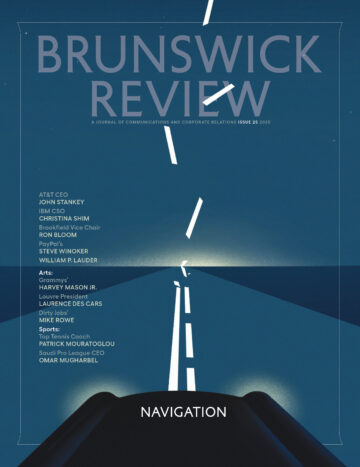
Navigation
Most read from this issue
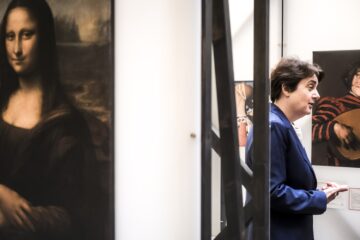
The Museum of Museums
